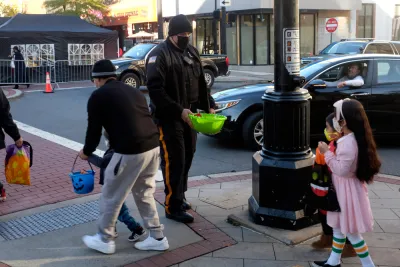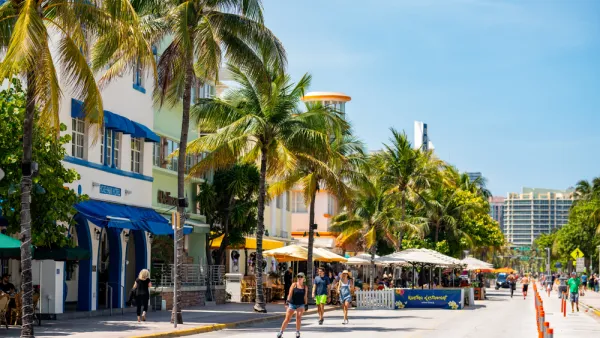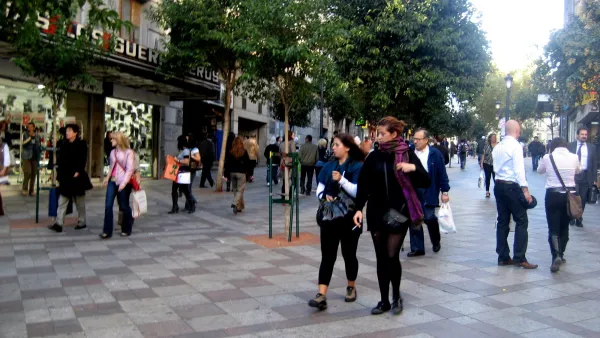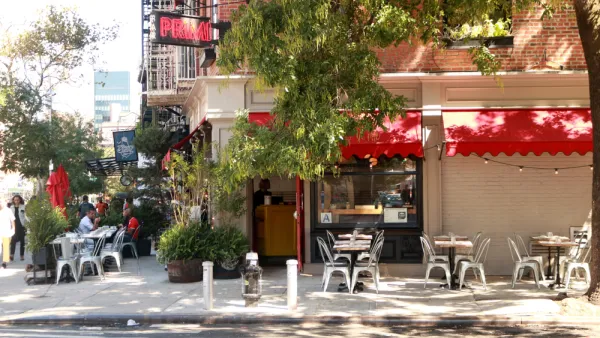Forget razor blades in apples. Henry Grabar argues the biggest threat on Halloween is much more mundane.

In an op-ed for Slate, Henry Grabar uses the annual parent panic over Halloween dangers to highlight another very real and present danger to children: cars. A CDC study showed that children are four times more likely to be killed on Halloween than on any other day.
According to an analysis in the Washington Post, 54 kids were killed by cars on Halloween between 2004 and 2018, making it by far the deadliest day of the year; no other day of the year saw more than 30 deaths across those 15 years, and most saw far less.
Grabar notes that the chance of getting struck by a car is still small, and “no more reason to keep a kid at home on All Hallows’ Eve than fear of fentanyl-flavored Skittles.” But the sharp increase in risk still warrants action, this year in particular. Grabar explains this is in part because “this Halloween falls during a historic surge in bad driving.” On top of that, pandemic-era open streets programs and other experiments with opening up more space to pedestrians have primed cities for changes.
Grabar argues for making Halloween a ‘slow driving’ day, “with trick-or-treat destinations closed to traffic, and everyone else on high alert.” Pointing out that children are known to “have a sixth sense for good design, such as generous lighting, a walkable urban fabric, calm streets, and sidewalk-facing architecture, that adults sometimes struggle to enumerate,” Grabar believes the “trick-or-treat test” should be applied to more of our streets, year-round.
FULL STORY: Ban Cars on Halloween

National Parks Layoffs Will Cause Communities to Lose Billions
Thousands of essential park workers were laid off this week, just before the busy spring break season.

Retro-silient?: America’s First “Eco-burb,” The Woodlands Turns 50
A master-planned community north of Houston offers lessons on green infrastructure and resilient design, but falls short of its founder’s lofty affordability and walkability goals.

Delivering for America Plan Will Downgrade Mail Service in at Least 49.5 Percent of Zip Codes
Republican and Democrat lawmakers criticize the plan for its disproportionate negative impact on rural communities.

Test News Post 1
This is a summary

Test News Headline 46
Test for the image on the front page.

Balancing Bombs and Butterflies: How the National Guard Protects a Rare Species
The National Guard at Fort Indiantown Gap uses GIS technology and land management strategies to balance military training with conservation efforts, ensuring the survival of the rare eastern regal fritillary butterfly.
Urban Design for Planners 1: Software Tools
This six-course series explores essential urban design concepts using open source software and equips planners with the tools they need to participate fully in the urban design process.
Planning for Universal Design
Learn the tools for implementing Universal Design in planning regulations.
EMC Planning Group, Inc.
Planetizen
Planetizen
Mpact (formerly Rail~Volution)
Great Falls Development Authority, Inc.
HUDs Office of Policy Development and Research
NYU Wagner Graduate School of Public Service





























